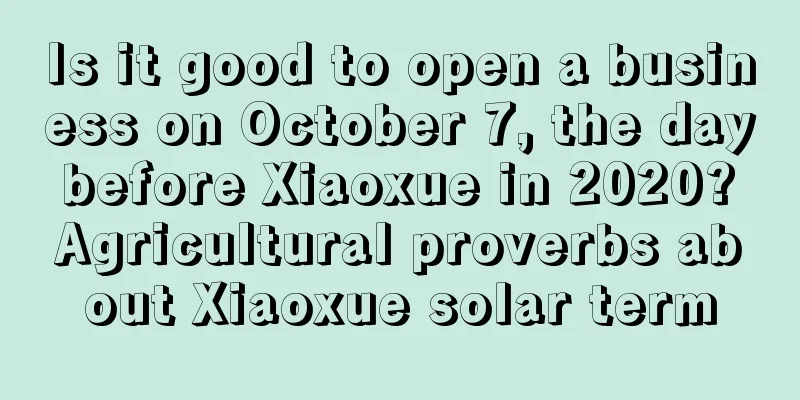When is the Spring Festival? What are the traditional customs of the Spring Festival?

As the saying goes, "A day's plan begins in the morning; a year's plan begins in spring." The "spring" here can refer to spring, or it can refer to the traditional Chinese festival "Spring Festival." So when is the Spring Festival? The Fortune Teller website provides you with more information related to the first month of the lunar calendar in 2018. You are welcome to learn more about it!When is the Spring Festival?The Spring Festival generally refers to the first day of the first lunar month, which is the first day of the year, also known as the lunar year, commonly known as "New Year's Day"; but among the people, the traditional Spring Festival refers to the period from the La Festival in the twelfth lunar month or the Kitchen God Festival on the twenty-third or twenty-fourth day of the twelfth lunar month, to the nineteenth day of the first lunar month, with New Year's Eve and the first day of the first lunar month as the climax.The Spring Festival is China's most distinctive traditional festival. Chinese people have celebrated the Spring Festival for more than 4,000 years. There are many different theories about the origin of the Spring Festival, but the generally accepted one is that the Spring Festival originated in the Yu Shun period. The Spring Festival generally refers to the first day of the first lunar month, which is the first day of the year, also known as the lunar year, commonly known as "New Year's Day"; but among the people, the traditional Spring Festival refers to the period from the La Festival in the twelfth lunar month or the Kitchen God Festival on the twenty-third or twenty-fourth day of the twelfth lunar month, to the nineteenth day of the first lunar month, with New Year's Eve and the first day of the first lunar month as the climax. During the Spring Festival, China's Han ethnic group and many ethnic minorities hold various activities to celebrate. The main contents of these activities are to worship ancestral gods, pay tribute to ancestors, get rid of the old and welcome the new, welcome the new year and pray for a good harvest. The activities during the Spring Festival are rich and colorful, with strong ethnic characteristics. Influenced by Chinese culture, some countries and ethnic groups belonging to the Chinese character cultural circle also have the custom of celebrating the Spring Festival. What are the traditional customs of the Spring Festival?Opening firecrackers On the morning of the Spring Festival, when the door is opened, firecrackers are set off first, which is called "opening firecrackers". After the sound of firecrackers, the ground is covered with red fragments, as bright as brocade, which is called "Mantanghong". At this time, the streets were full of auspiciousness and joy.An important activity during the Spring Festival is to visit relatives, friends and neighbors to wish them a happy New Year, which was formerly known as New Year's greetings. The custom of New Year's greetings among the Han nationality has already existed in the Han Dynasty. It became very popular after the Tang and Song dynasties. If someone could not go in person, they could send their congratulations using a business card. It was called "ci" in the Eastern Han Dynasty, so business cards are also called "mingci". After the Ming Dynasty, many families posted a red paper bag at the door to collect business cards, which was called "menbu". Giving out New Year’s money (called “Bi Li Shi” in Guangdong) is given by the elders to the younger generations. In some families, after the New Year’s Eve dinner, everyone sits at the table and is not allowed to leave. After everyone has finished eating, the elders give the money to the younger generations and encourage their children and grandchildren to study hard and be good people in the new year. In some families, parents put New Year's money under their children's pillows after they fall asleep at night. This reflects the love of the elders for the younger ones and the respect of the younger ones for the elders. It is a folk activity that integrates family ethical relationships. In the old days, people would predict the harvest of the new year based on the weather conditions in the first few days of the new year. The theory originated from Dongfang Shuo's "Sui Zhan" in the Han Dynasty, which said that eight days after the year, the first day is the chicken day, the second day is the dog day, the third day is the pig day, the fourth day is the sheep day, the fifth day is the cow day, the sixth day is the horse day, the seventh day is the human day, and the eighth day is the grain day. If the day is sunny, the things it governs will flourish; if the day is cloudy, the things it governs will not prosper. Later generations followed this custom and believed that it was auspicious if the weather was clear, windless and snowless from the first to the tenth day of the lunar month. Later generations developed the fortune-telling into a series of sacrificial and celebratory activities. There is a custom of not killing chickens on the first day of the lunar month, not killing dogs on the second day, not killing pigs on the third day... not executing the law on the seventh day, and not threshing grain on the eighth day. |
<<: Is January 16th of the lunar calendar 2018 a good date? Can I sign the contract?
Recommend
Can't you give shoes as gifts during the Chinese New Year? What does it mean to give shoes as gifts during the Chinese New Year?
Many people give gifts during the New Year, but I ...
2020 Beginning of Summer - Can we start construction on April 13? How many days are left until 2020 Beginning of Summer?
Introduction: Generally, it is necessary to choose...
Query the position of the God of Happiness on April 14, 2019. Where is the God of Happiness?
The fireworks of March have passed, and the most ...
Where is the direction of the God of Happiness on the 17th day of the third lunar month in 2019?
In March, all things come back to life, willows a...
How is Cancer’s fortune during the Mid-Autumn Festival in 2017? How do Cancers spend the Mid-Autumn Festival?
Introduction: Everyone’s fortune will change with ...
Is the 17th day of the 12th lunar month in 2021 a good day? Is it an auspicious day?
Different days have different good and bad qualiti...
What fruits are suitable to eat during the Grain Rain solar term? What is the origin of the Grain Rain solar term?
What fruits are suitable to eat during the Grain R...
Is the Spring Equinox on February 15, 2019 in the lunar calendar suitable for starting renovations? What is the Spring Equinox?
Introduction: In our country's traditional cul...
Is it a good time to have a wedding during the Summer Solstice in 2019? Which zodiac signs are the least suitable for getting married during the Summer Solstice?
The arrival of the Summer Solstice marks the begin...
What is the fate of people born in the Beginning of Heat? Is being born in the Beginning of Heat a sign of wealth?
Chushu is one of the 24 solar terms. The fate of c...
Is September 25th of the lunar calendar in 2021 suitable for caesarean section? Is this day a good day?
The ninth month of the lunar calendar is also know...
What day is New Year’s Eve? What are the things to pay attention to on New Year’s Eve?
New Year’s Eve is the last day of the year. On thi...
Are people who died on Christmas Eve okay? What does it mean to die on Christmas Eve?
Christmas Eve is one of the traditional festivals ...
Query the auspicious and unlucky time of the 22nd day of the 11th lunar month in 2017, and the auspicious and unlucky time of the 22nd day of the 11th lunar month in 2017
In the eleventh month of the lunar calendar, whet...
Analysis of the auspicious day on August 20 of the lunar calendar in 2021. Is this day an auspicious day for travel?
With the good development of transportation, every...









